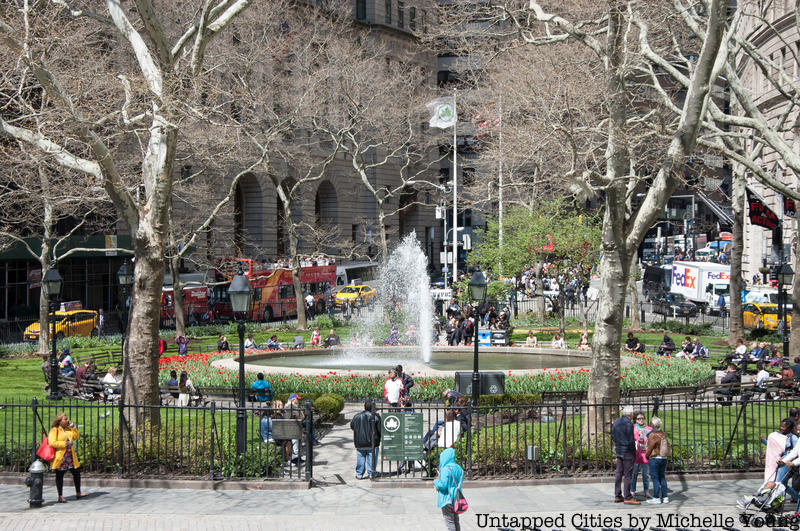10. Bowling Green Has Always Been an Important Site, Dating Back to the Native American Era

Today, Bowling Green has the Alexander Hamilton Customs House and the Wall Street Bull, but it’s importance dates all the way back to the Native America era. It is believed there was a Kapsee chief hut at the foot of the Wickquasgeck Trail, which would later become Broadway. At the foot of the trail was a large elm that would have denoted a sacred spot where council fires were held. It was also a place for trade and for meeting. From what we know of the Lenape Indian era, it is clear that the area that is now lower Broadway was a government site, a commercial site for trading, and a social site.
It would have been located at the meeting point of two rivers, now long infilled. It would have had sightlines to both Long Island and New Jersey, and have had direct access to the harbor which was important for both protection and for trade. This direct access has also long been infilled, as Manhattan’s waterfront as expanded further outward.
The Wickquasgeck trail, which was the first north south route in what is now New York City went from today’s Bowling Green all the way up to Montreal, and was a primary trading route used by many Indian tribes.
The above image is a map from the Welikia Project showing Manhattan in 1609. This online tool allows you to overlay present day Manhattan onto 1609 Manahatta and the section highlighted shows the current Alexander Hamilton Customs House at the foot of Bowling Green and Broadway coming off of it.
Next, read more about the history of Bowling Green and learn about how it got its name.





